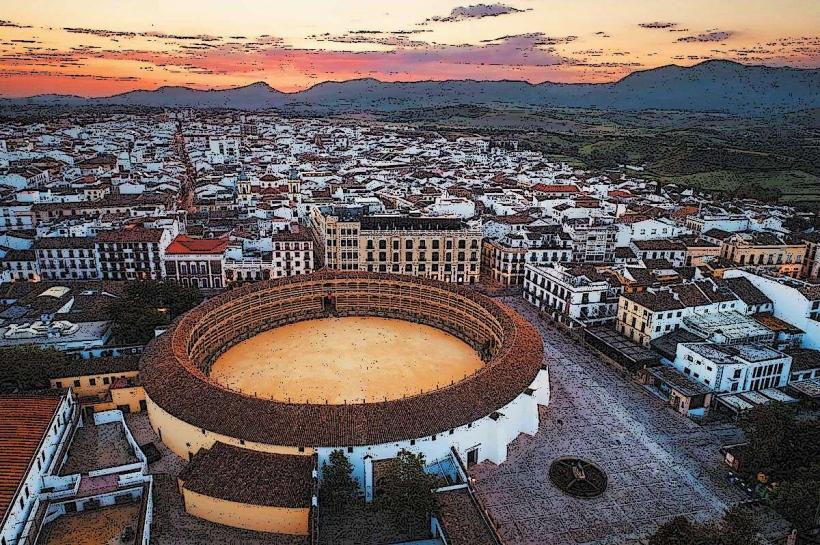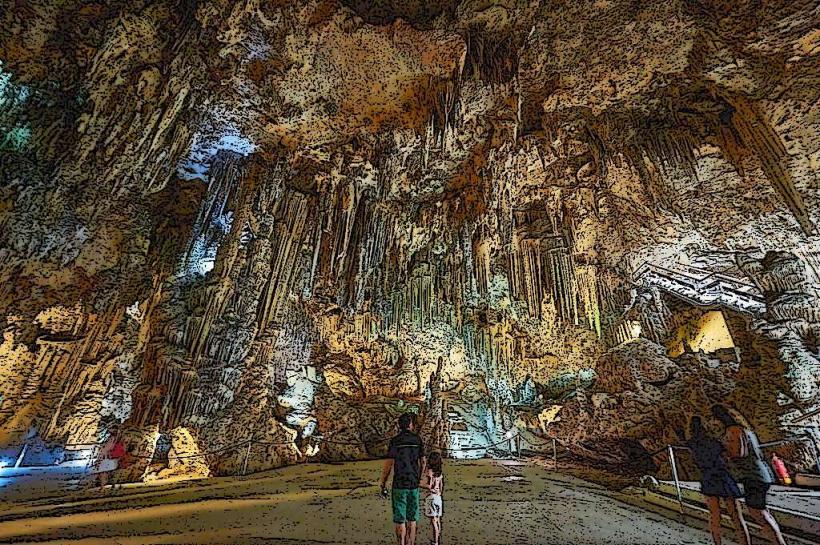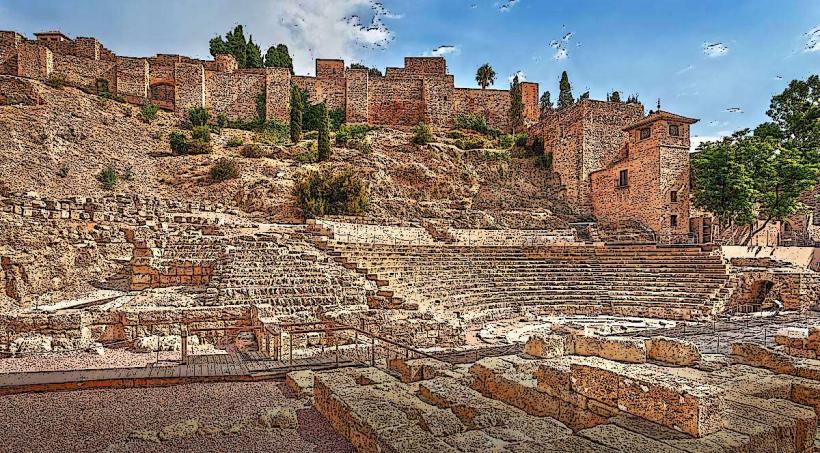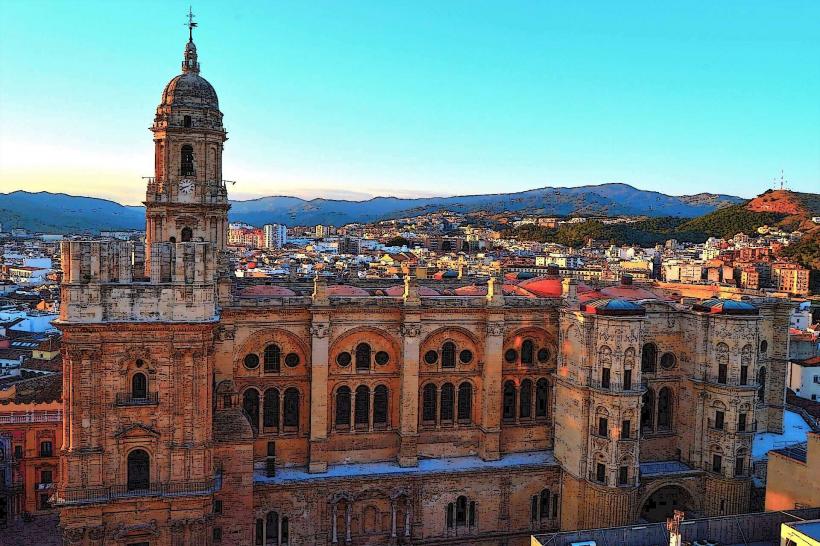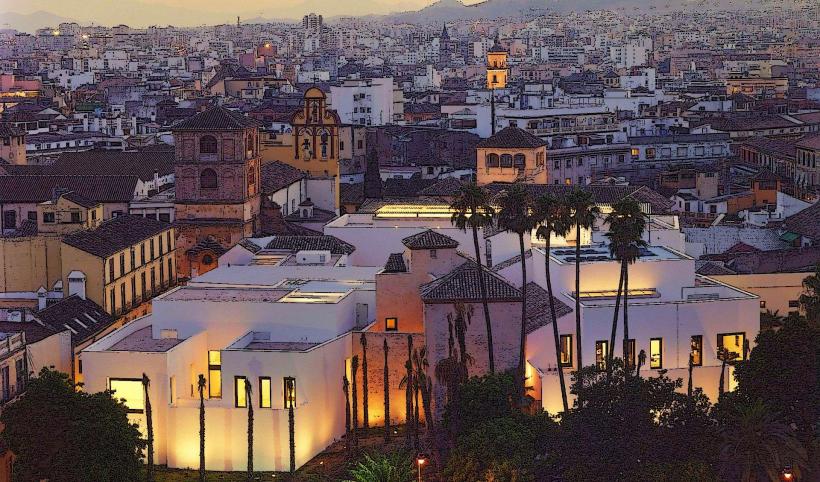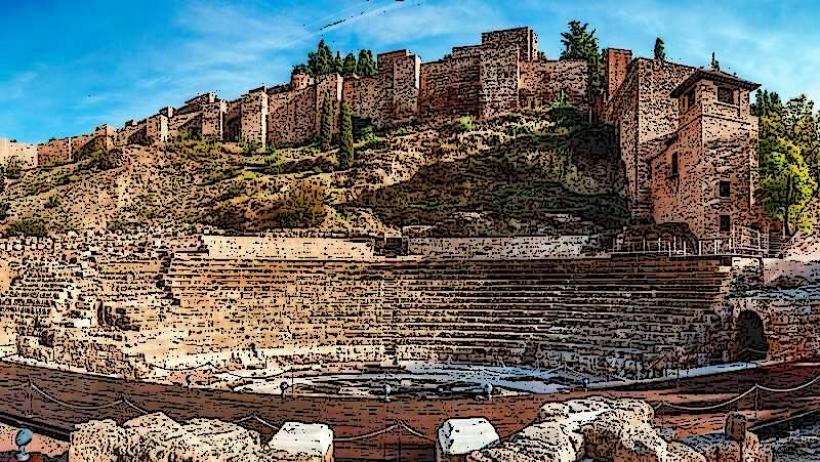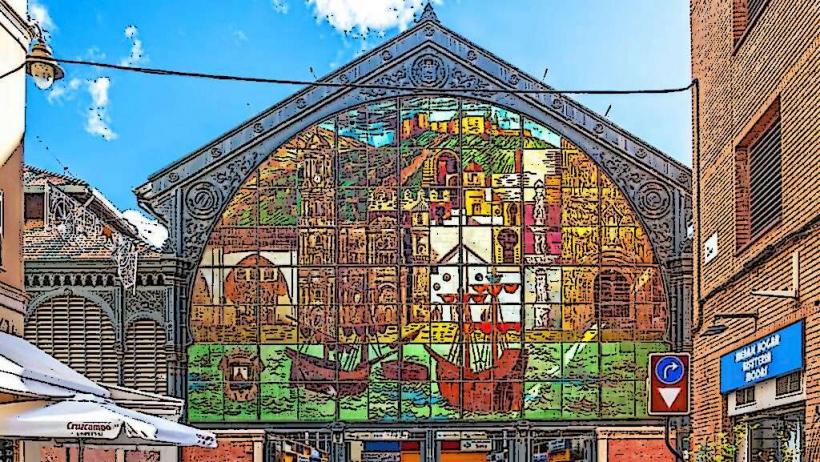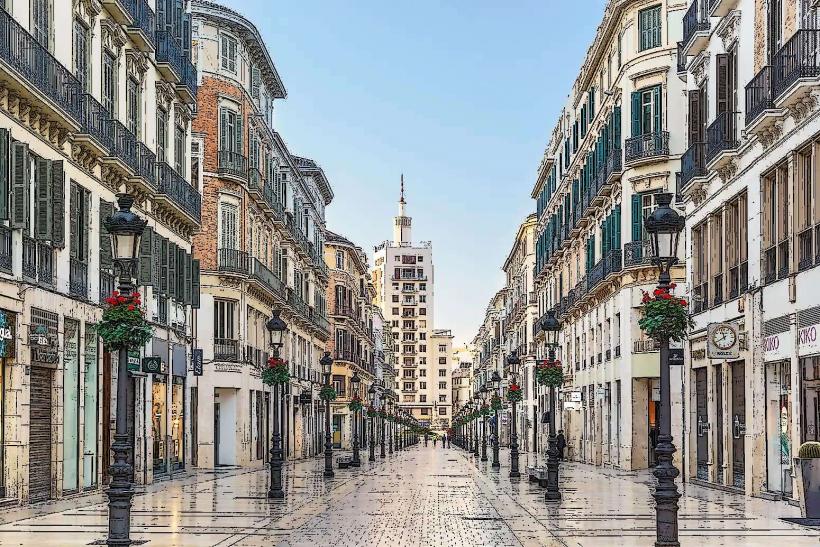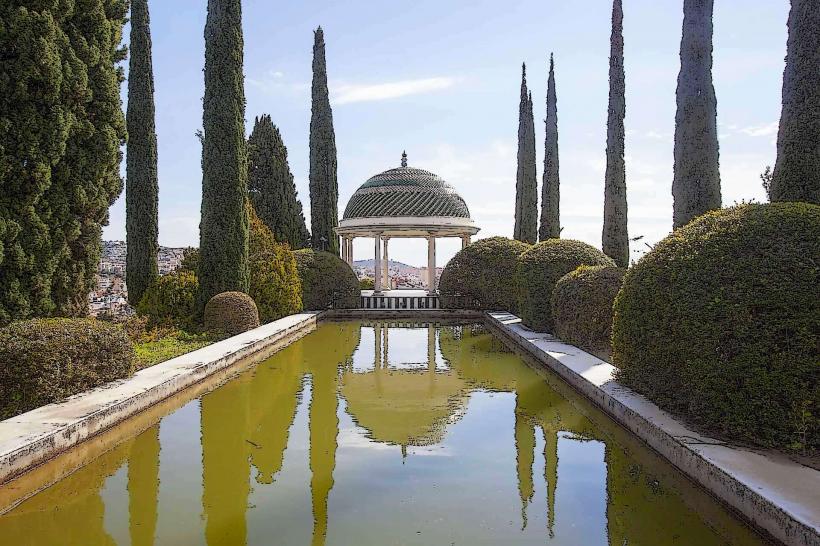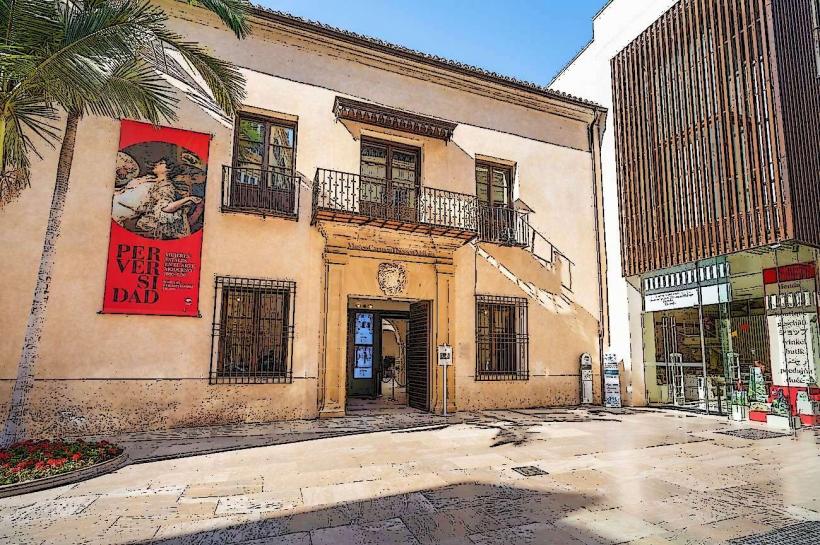Information
Landmark: Castillo de GibralfaroCity: Malaga
Country: Spain
Continent: Europe
Castillo de Gibralfaro, Malaga, Spain, Europe
Overview
Rising above Málaga’s skyline, the Castillo de Gibralfaro stands as a striking landmark, with its stone walls opening onto sweeping views of the city, the glittering Mediterranean, and the hills beyond, moreover perched high on a hill above the city, this fortress has guarded Málaga for centuries, serving as a key stronghold in both the Moorish and Christian eras, in a sense The Castillo de Gibralfaro began as a Phoenician-built lighthouse in the 8th century BC, its beacon once flickering over the gloomy Mediterranean waters, moreover most of what stands here today rose in the 14th century, when Yusuf I, the Nasrid Sultan of Granada, built it as a military fortress, its towers catching the sun on their red stone walls.It was built to shield the Alcazaba and the city of Málaga from enemy assaults, especially the Christian armies pressing in during the Reconquista, as well as the castle played a key role in a wider network of defenses guarding the city, working alongside the Alcazaba-a nearby fortress-palace whose sunlit stone walls still catch the afternoon light.Perched high on Gibralfaro Hill, the fortress stands 131 meters above the city, its stone walls catching the wind and offering a perfect vantage point for keeping watch and holding the line, in turn from the hilltop, defenders could watch the horizon and catch the glint of ships or the dust of riders long before they drew near.Christian Takeover: In 1487, Christian forces seized the castle-along with most of Malaga-during the Reconquista, their banners snapping in the coastal wind, while after Granada fell in 1492, Ferdinand and Isabella kept hold of the castle, stationing troops inside its nippy stone walls, but over the years they let it slip into quiet disuse as a military post.Curiously, In the 19th century, the castle once again bustled with soldiers, most notably during the Napoleonic Wars, when French troops took over its stone walls and used the fortress to command the surrounding countryside, along with thick stone walls and watchtowers ring the Castillo de Gibralfaro, a striking showcase of Islamic-era military design, generally Its walls are thick enough to muffle footsteps, and the battlements rise high, built for guarding the keep and watching the horizon, along with perched on a strategic rise, the castle gave its defenders clear sight of any threat creeping in from the sea or marching over land.Somehow, From the watchtowers and turrets, you can spot traces of its heritage defenses-one tower still lifts you high enough to glimpse the coastline shimmer in the distance, subsequently thick masonry walls wrap around it, with sturdy ramparts linking the stronghold to the Alcazaba.Thick walls kept enemies out and gave the garrison a risk-free, solid base, while the towering Castle Gate-the grand entrance to the Castillo de Gibralfaro-swings open into the fortress’s sunlit inner courtyard, alternatively from here, you can stroll along the antique ramparts, catching sight of Málaga’s rooftops, the Alcazaba, and the glittering line of the Mediterranean, roughly Step inside the fortress and you’ll find the remains of barracks, storerooms, and thick stone walls that once sheltered soldiers and their supplies, furthermore you can still spot heritage cannon placements, a reminder of how the fortress guarded Málaga for centuries, and at the same site, the weathered stones of a Phoenician lighthouse hint at the days when the castle’s light guided ships across the dim sea, perhaps It no longer serves its antique purpose, but it still stands as a reminder of how Gibralfaro Hill once guided sailors and weary travelers long ago; from the castle’s walls, you can take in sweeping views of Malaga, with the sea glittering just beyond the rooftops, furthermore from the fortress summit, visitors take in the whole city-rooftops clustered below-the Alcazaba’s stone walls, the busy port, and the coastline fading into the blue shimmer of the Mediterranean.On a clear day, you can glimpse the Sierra de las Nieves rising to the north, its peaks faint against the sky, after that at sunrise or sunset, the city’s aged quarter glows gold beside the Mediterranean, drawing photographers and tourists with its beauty.A long, stone wall connects the castle to the Alcazaba, turning the stroll into both a history lesson and a feast for the eyes, also the Gibralfaro-Alcazaba hike leads you along the hilltop ramparts, where the link between the two fortresses comes into clear view.Along the way, weathered signs share stories of the castle’s past, its strategic importance, and the details of its stonework, likewise inside the Castillo de Gibralfaro, a modest military museum displays weapons, maps, and relics that trace the fortress’s role in wars and the sluggish shift of military technology over the centuries.Inside, you’ll find ancient maps, weathered swords, and relics that whisper stories of the castle’s past, in addition the Castillo de Gibralfaro sits high on Malaga’s eastern hill, and you can get there by walking up the winding path, driving, or hopping on a bus.It’s a steady climb from the city center to the castle, but the view-red rooftops scattered below-makes every step worth it, as well as there’s an entrance fee, and the gates stay open all year, though times shift with the seasons.People often pair it with a trip to the Alcazaba, since the two stand only a short amble apart and together reveal layers of history and architecture, as well as the Castillo de Gibralfaro, with its sun-warmed stone walls and sweeping views, ranks among Spain’s finest examples of Moorish military design.The fortress’s design shows off the Nasrid dynasty’s skill in engineering, built to meet every defensive need, from thick stone walls to narrow arrow slits, consequently it’s a reminder of Islamic rule in Andalusia and of Malaga’s vital role in the Middle Ages, when its harbor bristled with ships and watchtowers scanned the sea.It appears, The Castillo de Gibralfaro, rising beside the Alcazaba, once anchored Malaga’s defenses, its stone walls catching the glare of the Mediterranean sun, also built to shield Málaga from invading forces, the two fortresses still stand as solid proof of the city’s enduring military spirit, their stone walls rough under your fingertips.In short, the Castillo de Gibralfaro is a area you can’t miss if you’re drawn to Málaga’s past, its rugged fortress walls, and sweeping views that stretch from the city’s rooftops to the glittering blue of the Mediterranean, on top of that you might wander the fortress halls tracing centuries of history, pause at the ramparts to take in wind-swept views, or study its military past in the museum; whatever you choose, the castle leaves visitors with a rich, lasting impression., fairly
Author: Tourist Landmarks
Date: 2025-08-18

